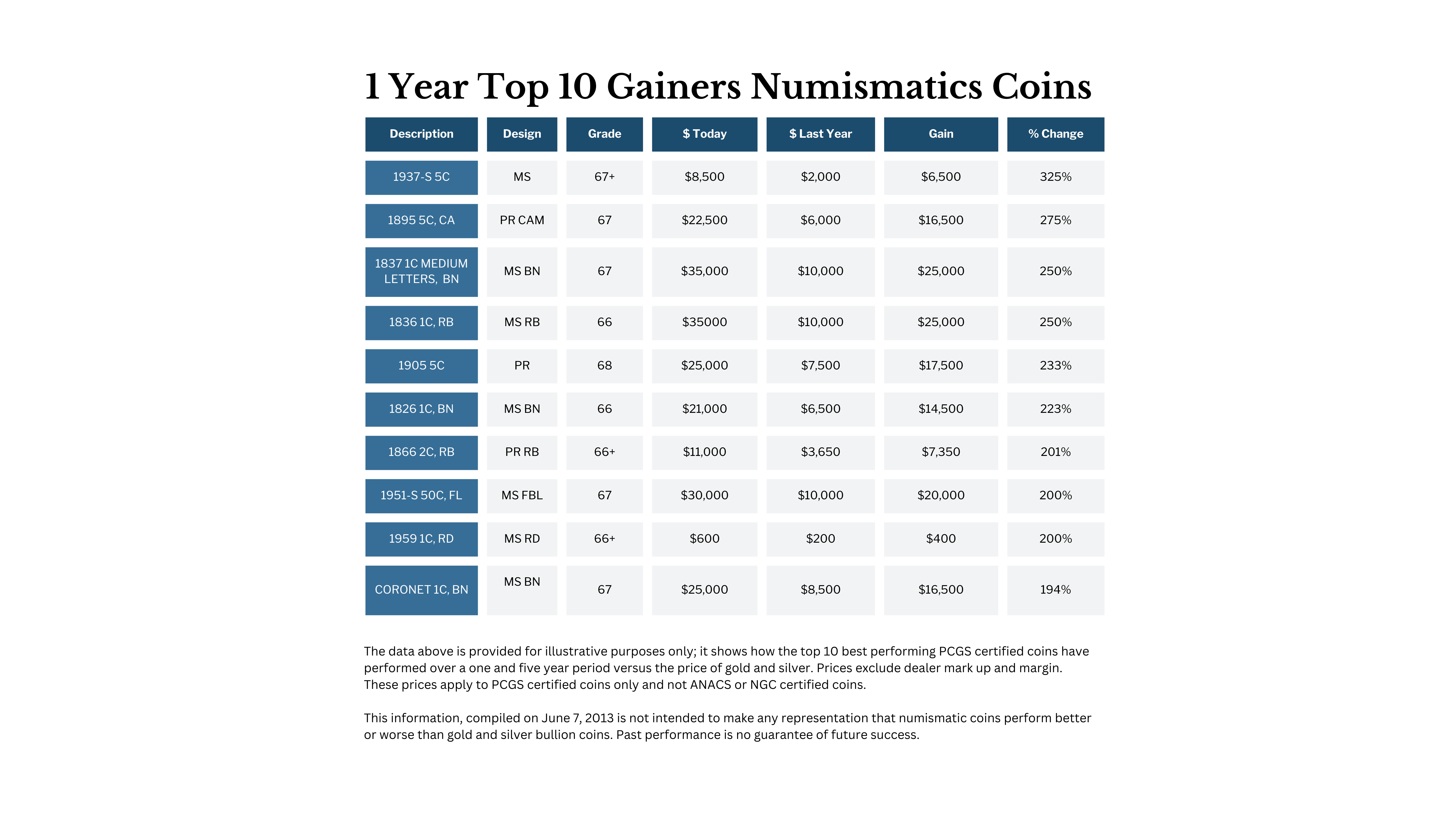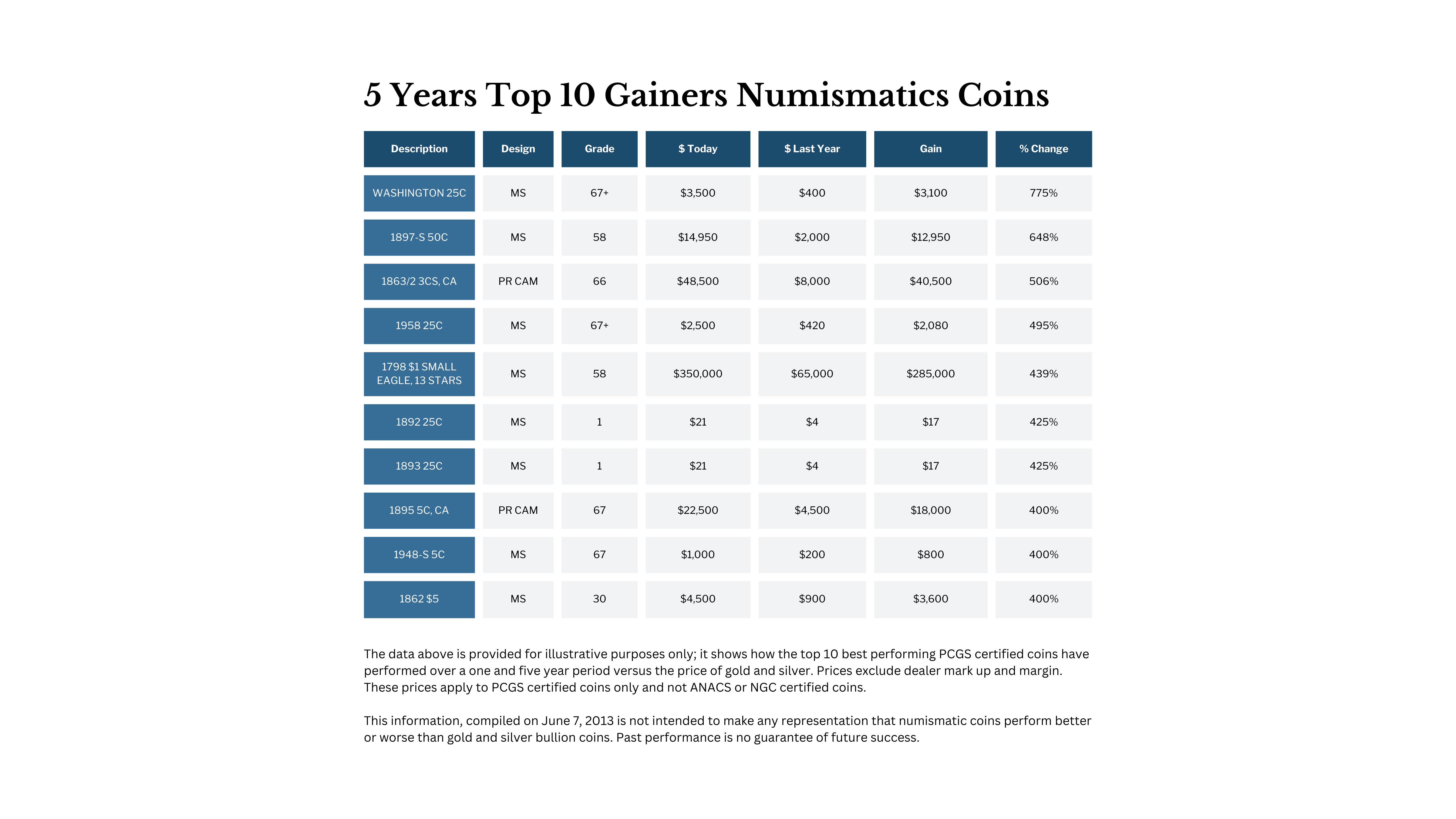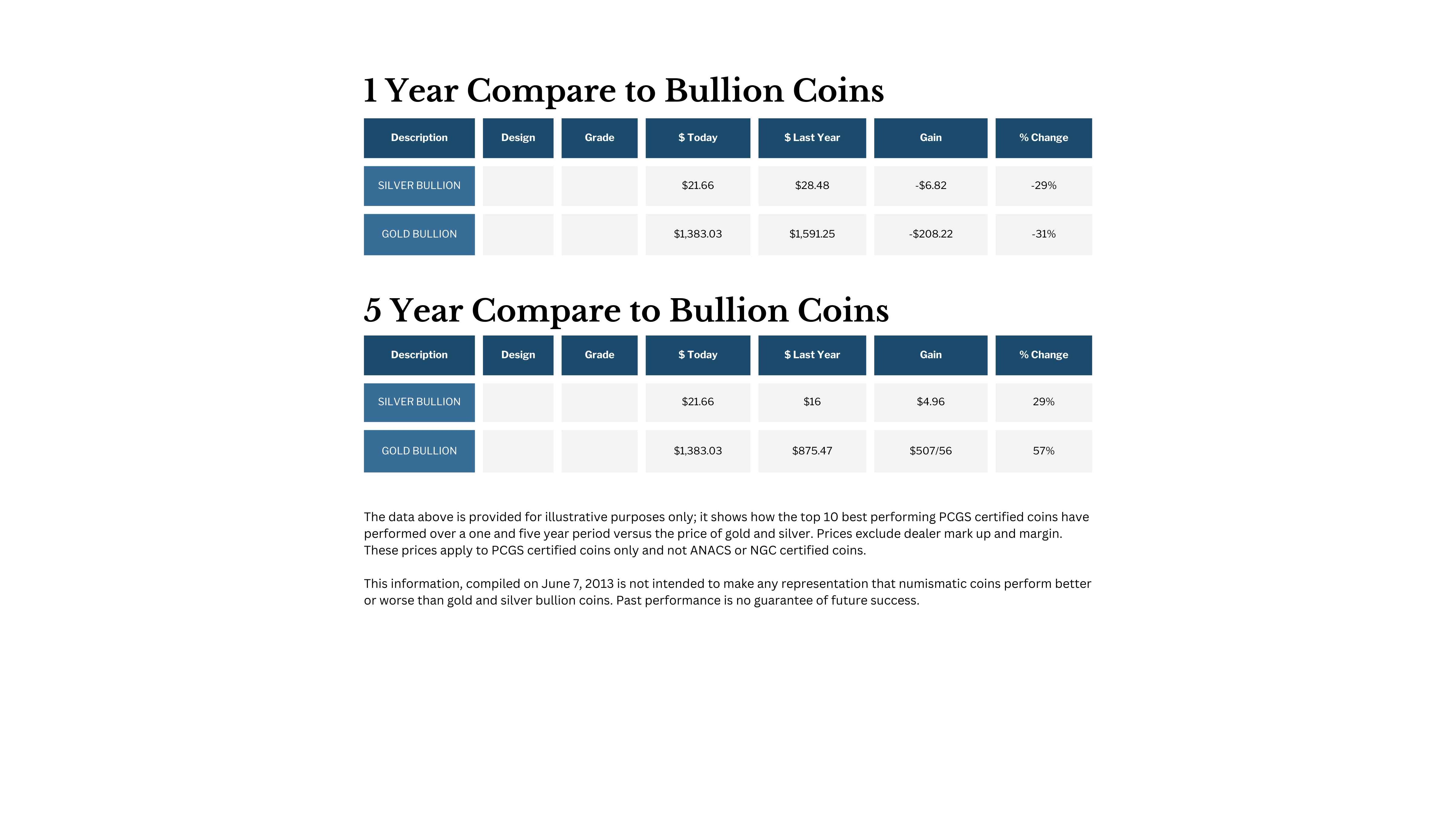


The current fee charged by ANACS, ICG, NGC, and PCGS is $30 per coin. The price may be higher or lower depending on the time it takes to grade a coin and the cost of the coin.
Coin grading is available to anyone who pays the grading fee plus shipping and handling. The chances of submitting one coin and it coming back in perfect MS70 or PR70 are small.
Each coin is inspected under magnification using optimum light by two coin graders who assign a grade to the coin. Only if both graders agree on the same grade, the coin moves forward for encapsulation into a slab. If the first two graders disagree and don't assign the same grade to the coin, it is passed along to a more senior expert who will decide the final grade of the coin.
No. You pay one fee regardless of the result. Dealers can’t pay extra to get more coins graded in perfect 70. Remember the coin grading service makes money from grading fees it has no interest in the retail value of the coin.
Mints around the world produce coins on a commercial scale in vast quantities, and very few have the full strike and flawless surfaces required to be considered a perfect coin. Depending on how the coins are stacked and packed with mint employees, some perfect coins coming off the production line can already be damaged before they leave the mint. We recently submitted four mint sealed 500-coin boxes of silver Canadian Maple Leafs we bought on the first day of release. None of these coins graded perfect MS70, and only 516 coins graded MS69. Maple Leafs are known for their high quality and sharpness of strike but this batch had residue on the surfaces, and the coins did not make the grade leaving us thousands of dollars in the hole on grading fees.
Most coins intended for circulation like pennies, nickels, dimes and presidential dollar coins don't grade perfect MS70. The highest known grades for these coins are MS68 and MS69. Proof versions of these coins, made for collectors are much higher quality and do grade PR70.
Having four primary coin grading services, ANACS, ICG, NGC, and PCGS serve the interests of the coin collecting community is better than having only two. The industry is very competitive, and each service wants to gain the most market share and best reputation. Like coin grading is subjective so is listing who offers the best coin grading service. Generally speaking, the order may be PCGS, NGC, ANACS, ICG. Westminster Mint is an authorized dealer for all four services and can fill orders in any holders you require.
The short answer is no. Depending on how few or how many coins have been certified perfect MS70/PR70 by a grading service, known as the (certified population), there can be a big difference in price.
Numismatics is the collection and study of coins, paper money, tokens, and medals. These are the most widely collected and studied numismatic materials. Other items are stock certificates, checks, and notes of financial obligations.
There are three common ways to value a coin – by its face value, its intrinsic value and its numismatic value. The face value is the dollar amount stated on the coin. The intrinsic value is the price the precious metal content of the coin. A one-ounce silver coin is worth its weight in silver. Silver in December 2017 was approximately $15.81 an ounce so the intrinsic value of a one-ounce silver coin would be roughly $15.81 The numismatic value is the: Date, rarity, condition, mint mark and provenance of the coin. Ultimately the numismatic collectible value is what you are willing to pay for the coin on any given day and what the seller is willing to accept. A collector paid a record high price of $3 million in 2012 to acquire a 1907 $20 Saint Gaudens high-relief lettered edge gold coin, one of only 20 known. That coin has a melt value in December 2017 of $1,202.70 In this example, the face value is $20.00. The intrinsic value is $1,202.70, and the numismatic value is $3 million.
Governments issue gold and silver bullion coins as an attractive, convenient way to invest in gold and silver. Bullion coins sell for a small premium of 5% -$17% above the price of their gold or silver content on any given day. Premiums are dependent on the diameter and net weight of the coin. Large one- ounce gold coins have a lower premium than smaller 1/10 ounce coins. The future value of bullion coins is based solely on their gold or silver content on the day you want to sell them.
Numismatic coins are collectibles and their precious metals content, if any at all, is only a tiny factor in measuring the value of the coin. The numismatic value is the: Date, rarity, condition, mint mark and provenance of the coin. The future value of a numismatic coin is based on supply and demand. Dealer mark ups and premiums are substantially higher for collectible coins than bullion coins.
What to collect is entirely up to you and your budget. You should have adequate cash reserves and disposable income before considering buying numismatic items. We recommend coins issued by major national mints because they have the largest audience. U.S. Mint and Royal Canadian Mint issues are an ideal place to begin.
Buy the book before you buy the coin. The Internet has also made buying and selling coins, paper money, tokens and medals easier than at any time in the past. The quantity and quality of information readily available in this electronic medium helps with building your collection. It gives you easy access to dealers nationwide and allows you to compare prices between dozens of different suppliers in a matter of minutes. This will enable you to judge the fair market value or accepted price range for numismatic items.
Use common sense; if an offer looks too good to be true then it probably is. You can reduce your risk by finding an established coin dealer who has been in business for a long time and who works from an established office or storefront location. Limit your purchases to certified coins graded by industry leading coin grading services such as ANACS, NGC and PCGS. Shop around and compare prices and ask about the dealers return policy.
Westminster Mint provides an unconditional 30-day money back guarantee on all collectible items (not gold and silver bullion).
When Westminster Mint ships your order the inspection period begins. To qualify for a refund, just make sure the product is returned complete and in sellable condition. The refund amount will include the full purchase price and any collected taxes. Shipping and Handling charges are non-refundable. All returns must be shipped with a reputable shipper and be adequately packaged and fully insured.
There is no charge for returning damaged or defective products. Please note seals, cases, and certificates of authenticity contribute to the value of the product and must remain complete, intact and unbroken for you to qualify for a refund.
The grade on the holder is the most critical factor. A coin certified perfect MS70/PR70 will always command a higher premium than the same coin certified in a lesser category like MS69/PR69, no matter what identifying mark appears on the labels.
The coin market is not only driven by supply and demand, but also by the idea of the exceptional. Collectors believe in the power of firsts, exclusivity, and limited editions. This lead to the advent of two types of labels – open to the public and closed to the public dealer proprietary tags.
The best known open to the public labels are PCGS First Strikes and NGC Early Releases. Collectors only have a short time window from the release date of a coin for it to qualify for certification with the First Strike or Early Releases designation. Dealer Proprietary labels are not open to the public and only submitted for certification by the authorized dealer. They also have short time requirements for certification.
Time-sensitive dealer proprietary labels include ANACS First Day of Issue, First Release, and Original strike coins. These names also have the added exclusivity and prestige of being certified limited editions. The importance of limited editions in the collector market can't be overstated. Other popular dealer proprietary labels, without time restrictions for submission, are Bridge labels, Blue bridge labels, Canada labels, Country labels, Eagle labels and USRC labels.
Premium labels have aesthetically attractive holders that appeal to a broad cross-section of collectors and invite brand loyalty. We provide access to coins certified with all of these unique tags and others like Top 50 Modern coins, 100 Greatest U.S. Modern coins, First day of Issue, City releases, ANA show releases and signature series coins. However, we don't own a proprietary label. PCGS, NGC and ANACS coins can be certified in Modern Coin Rarities tags, referring to the book we first published in 2016 "Modern Coins Rarities - 1986-2016".
In addition to the grade of a coin stated as Mint state (MS) on circulation strike coins and Proof (PR/PF) on Proof strikes your coins may have the additional notations.
These are terms used for Proof strike coins. In order for a coin to be considered a Cameo or Deep Cameo, both sides of the coin must meet a minimum benchmark for each designation. If only one side of coin attains this benchmark the coin is considered to be Cameo, if both sides of the coin attain the benchmark it is considered Deep Cameo.
Coin dealers and grading services may use these terms in varying ways. Some base their use on the dates appearing on United States Mint product packaging or packing slips, or on the years of product releases or ceremonial coin strike events. Consumers should carefully review the information below along with each dealer's or grading service's definition of "the First Day of Issue" First Strike," "First Release" or "Early Releases" when considering a purchase of coins with these designations. The United States Mint does not designate any coins or products as "First Strikes" "First Release" or "Early Releases," nor do they track the order in which the coins are minted. The mint strives to produce coins of consistently high quality throughout production. This lack of tracking means that coins may be stamped from new die sets at any point and at multiple times while production of a coin is ongoing, not just the first day or at the beginning of the minting process.
United States Mint products are not individually numbered, and they do not keep track of the order or date of minting of individual coins. Any times on shipping boxes are strictly for quality control and accounting purposes at the United States Mint. The year on the box represents the date that the box was packed, verified and sealed, and the time of packaging does not necessarily correlate with the date of manufacture. A coin must be received by the coin grading service in the first 24 hours of release to qualify for the First Day of Issue and in 30 days for other designations such as PCGS First Strike, NGC Early Releases and ANACS First Release coins. ANACS First Release coins have individually numbered holders. These numbers are assigned by ANACS, a private coin grading service, at the time of grading.
These are terms used for circulation strike coins and measure the amount of evident reflectivity on both sides of the coin. If only one side of the coin has deeply mirrored surfaces, it is called a Proof-like, if both sides of the coin meet the benchmark, then it is a Deep Proof-like.
This term applies to NGC certified coins – NGC used it for coins that have extraordinary eye appeal within the grade and refers to both circulation strike and Proof strike coins.
A term used for coins considered to be at the high end of their assigned grade, approaching the quality requirements for the next grade. These coins have above-average eye appeal.
Certified coins whose holders have bee hand signed by someone with a compelling personal connection to a particular coin are called Signature Coins. Signatures are favorite and allow collectors to customize their sets, enhance their presentation and add a level of exclusivity and collectibility
The most sought-after people signing coins in 2017 are Edmund C. Moy, Hon. Michael Castle, Kenneth Bressett, John Mercanti, Charles Vickers, Thomas Cleveland.
ANA show and City Releases, identify locations where a mint released a limited number of coins to the public.